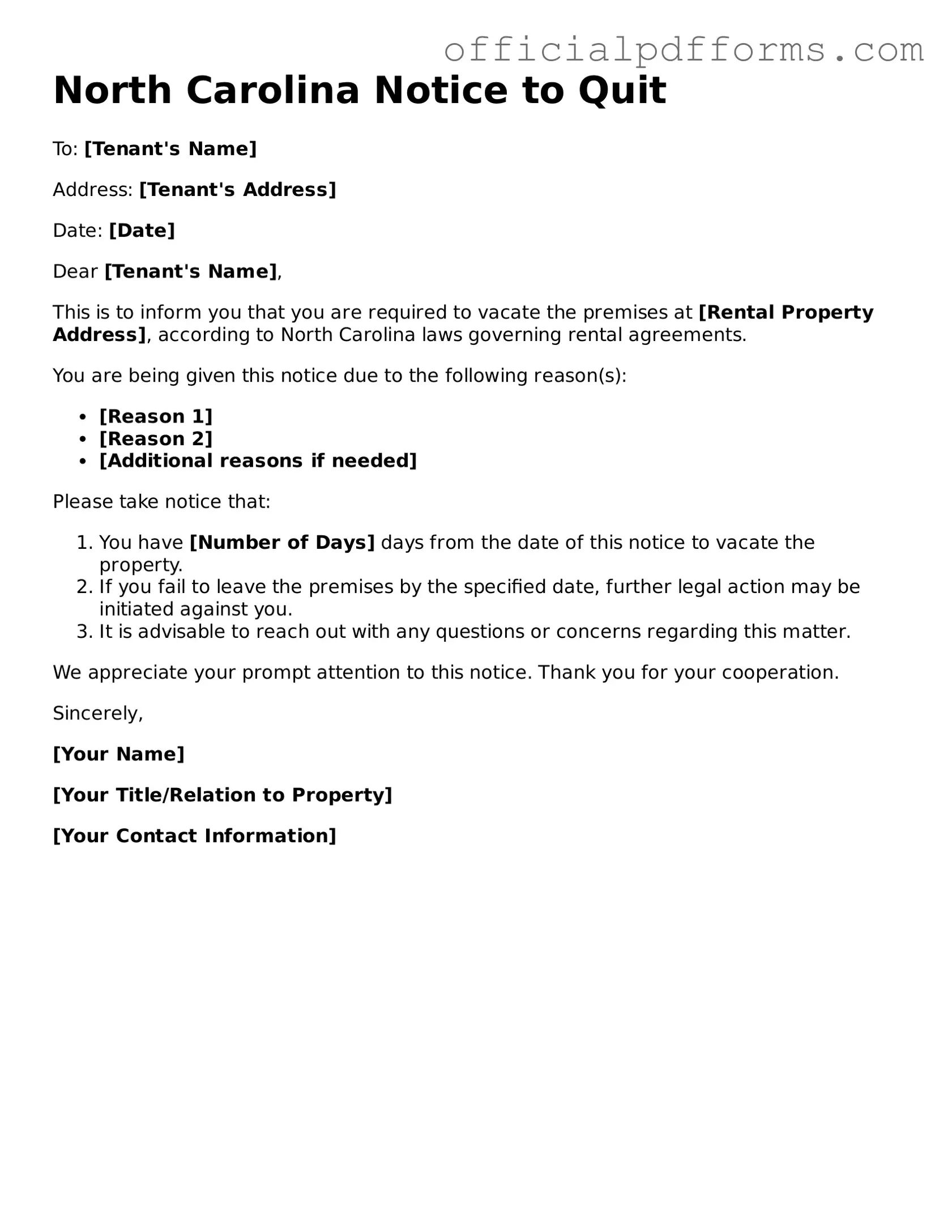What is a Notice to Quit in North Carolina?
A Notice to Quit is a formal document that a landlord provides to a tenant to terminate a rental agreement. It informs the tenant that they must vacate the rental property by a specified date. This notice is usually the first step in the eviction process if the tenant has violated the lease terms or has not paid rent.
When should a landlord use a Notice to Quit?
A landlord should issue a Notice to Quit when a tenant has not complied with the lease agreement. Common reasons include:
-
Failure to pay rent
-
Violating lease terms, such as unauthorized pets or excessive noise
-
Engaging in illegal activities on the property
It's essential to follow the appropriate legal procedures when issuing this notice to avoid complications down the line.
How much notice must be given to the tenant?
In North Carolina, the notice period can vary based on the reason for the termination. Generally, landlords must provide:
-
10 days' notice for non-payment of rent
-
7 days' notice for lease violations
-
30 days' notice for month-to-month leases without cause
Make sure to check the specific terms of the lease and local laws for any additional requirements.
Can a tenant contest a Notice to Quit?
Yes, a tenant can contest a Notice to Quit. If they believe the notice is unjust or that they have rectified the issue, they can respond to the landlord. It’s advisable for tenants to document any communications and seek legal advice if necessary.
What happens if the tenant does not leave by the deadline?
If the tenant does not vacate the property by the deadline specified in the Notice to Quit, the landlord may proceed with eviction proceedings. This typically involves filing a complaint in court and may require a hearing. It's crucial for landlords to follow legal protocols to ensure a smooth eviction process.
Is a Notice to Quit the same as an eviction notice?
No, a Notice to Quit is not the same as an eviction notice. The Notice to Quit is a preliminary step that informs the tenant they must leave the property. An eviction notice follows if the tenant does not comply. The eviction process involves legal action and court involvement.
Can a tenant receive a Notice to Quit for reasons other than non-payment?
Absolutely. A Notice to Quit can be issued for various reasons, not just non-payment. Lease violations, illegal activities, and other breaches of the rental agreement can also trigger a Notice to Quit. It’s important for tenants to understand their lease terms to avoid these situations.
